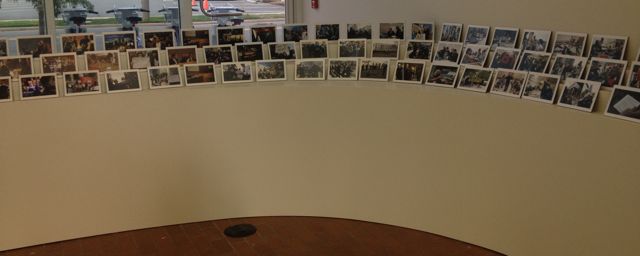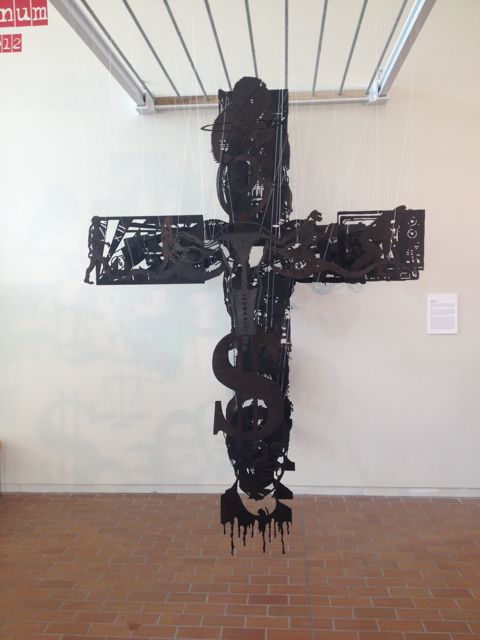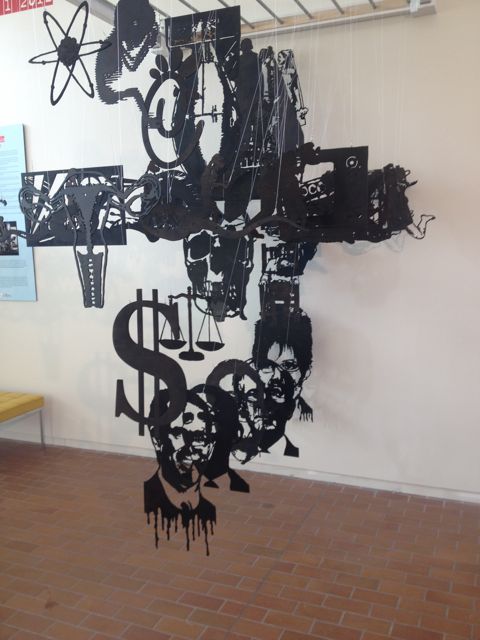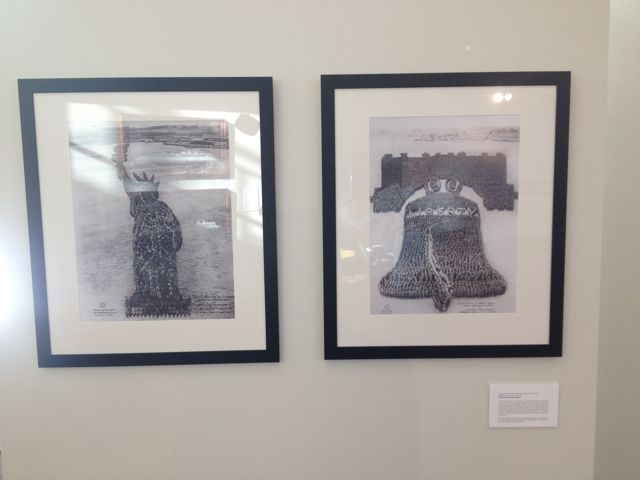
“E Pluribus Unum”: negotiating differences
E Pluribus Unum.“Out of many, one.” This Latin phrase has long stood as the de-facto motto for the United States of America. In many ways it accurately captures the nature of the U.S.A. forming one nation out of a collection of states and one citizenry out of a people with various backgrounds and beliefs. UNC Charlotte’s Projective Eye Gallery at the Center City building presents an art exhibition titled “E Pluribus Unum,” on display from August 24 to November 1. “E Pluribus Unum” explores the experience and meaning of this phrase in America through artistic expression.
In this exhibition, the art works, representing 10 different artists, screamed one central term: pluralism. On a deeper level, these works reflected not only the diversity of opinions and beliefs in America but the struggle that ensues to negotiate these differences. From Nora Ligorano and Marshall Reese’s work “Morning in America (Middle Class)” to Carrie Gault’s “Voting Confessional,” visitors are presented with the social unrest and class conflict that exist in our “unified” nation. This struggle is evident in the Queen City, as Grant Baldwin’s piece, “Evolution of the Charlotte Protest Movement,” demonstrates.
Eighty-five prints of photographs taken during Occupy Charlotte stretch across almost one entire wall of the exhibition, showing the nature, people and events of the protest movement that lasted from October 2011 to May 2012. Baldwin captured images that make you think, make you laugh and cause alarm.
“In God We Trust” by Michael Murphy.
Particularly arresting is the work “In God We Trust” by Michael Murphy, created specifically for “E Pluribus Unum.” The work plays upon the exhibition title, forming the illusion of one graphic form, a cross, out of many disparate parts. Murphy’s piece uses America’s other popular motto, “In God We Trust,” to explore how religion is used in contemporary American politics and to raise the debate over its legality as a national motto.
“In God We Trust” by Michael Murphy.
Out of the struggles presented by the artists in “E Pluribus Unum,” the work of Arthur Mole and John Thomas stands apart. Created during World War I to entice enlistment by American men, these “Living Photographs” present a vision of unity in purpose through the use of American iconography and symbols of our collective history. Mole and Thomas orchestrated as many as 30,000 U.S. soldiers, enlisted men, and nurses to physically form the shapes of the Statue of Liberty, the Liberty Bell and the Great Seal among others.
“Living Photographs” by Arthur Mole and John Thomas.
Jason Michell’s sound collage is a recording of voices from the mass media that plays in the background of the gallery. Its constant buzzing irritates the ears, but it is a striking reminder that the struggles arising from our diversity can be corrupted to drown out any real meaningful debate. “E Pluribus Unum” is a thought-provoking and interesting exhibition; it showcases the Projective Eye Gallery as a forum for diversity where artists are allowed to voice their opinions and describe their own work.
UNC Charlotte Center City Building: 320 E. 9th St., Charlotte; centercity.uncc.edu. Open Mon.-Sun., 9 a.m. – 9 p.m.
Recent Content
-
Artsarticle ·
-
Artsarticle ·
-
Artsarticle ·



